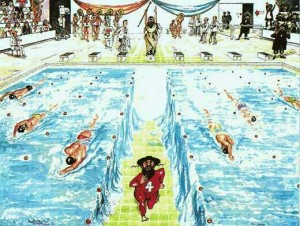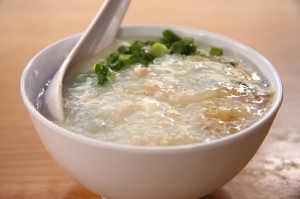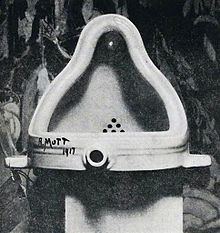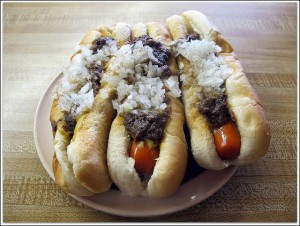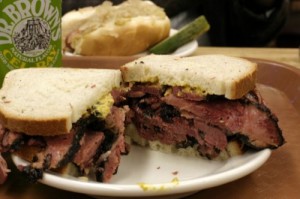Advice from HG if a “Springtime In Paris” is contemplated. Bring a good raincoat and walking shoes. Paris is a great walking city and nice surprises lurk around every corner. Rent an apartment. Cheaper than a hotel and you can feast in your own kitchen on all the great cheese, bread, charcuterie and wine that is easily available. Wine is much cheaper in Paris than in the United States, so indulge without guilt. A restaurant lunch is a much better value than dinner, so make that your meal of the day. Always nice to have some oysters (and bulots) in a brasserie in the early evening and then purchase a good roast chicken for dinner in your apartment (The places that sell roast chickens usually have tasty little roast potatoes as an accompaniment). Paris has the world’s best chocolates. Buy some and have them with red wine for dessert. A fresh baguette with French salted butter and cafe au lait should be your daily breakfast. Paris is a movie town and scores of American films are usually on view. Just check to see if the movie is “v.o.”–In English with French subtitles. Be disciplined about museums. Yes, the Louvre, Gare d’Orsay, Pompidou. Musee Picasso, Musee Rodin are great. But, be selective about what you want to see. HG and BSk rarely spend more than two hours at a museum or special exhibit. Beyond that eyes get glazed, feet get heavy and artistic insights diminish. Though New York is really a better and more cosmopolitan food town, the ambiance, sparkle — and affordability — of Paris restaurants remain unique. Your best online dining guides are: Alexander Lobrano’s “Hungry For Paris”; John Talbott’s Paris and the blog Paris Update. If you log into Paris Update you will not only get the latest on dining, shopping, etc., but you can access David Jaggard’s “C’est Ironique,” a witty and perceptive chronicle of life in Paris. Jaggard is a journalist, translator and composer. He’s lived in Paris since the 80’s and is one of the funniest writers around. Don’t miss him. Bon appetit!!
HG’s Tips For a Fine Parisian Spring
March 31st, 2013 § 0 comments § permalink
Speaking About the Unspeakable
March 30th, 2013 § 0 comments § permalink
Natural functions being what they are, the bathroom (also known as the sanitary facility, the toilette, the Head, the W.C or the stately “Gentlemen’s Lounge”) is a necessary adjunct to dining, movie going and other pleasurable activity. In HG’s experience, the vilest bathrooms can be found in New York’s Chinatown. The smallest are in coffee bars in Italy. The most inconvenient are in Paris bistros where they are often tucked away in a subterranean alcove. The most luxurious can be found in the best London hotels like the Connaught, Savoy and Dorchester. The Oak Room of the Plaza Hotel in New York had a splendid bathroom supervised by a deft and distinguished attendant (The Plaza has undergone vast changes and HG hasn’t visited the Oak Room for decades so this may no longer be true). HG had a memorable experience in that bathroom. The super debonair actor Cary Grant (a frequent Oak Room diner) entered the bathroom with HG. Unlike HG, he did not remove his jacket. Instead, Grant unbuttoned the buttons on the jacket’s sleeves, did a quick fold and washed his hands. HG was dazzled, having long believed that sleeve buttons were merely decorative. From that time on, HG went to the extra expense of having his suit jackets tailored with operable buttons. The most architecturally distinguished bathroom HG ever encountered was the art deco masterpiece in New York’s Radio City Music Hall. In HG’s recollection, its walls had a mural extolling smoking and tobacco cultivation. It was also the first bathroom with a warm air blower for drying hands. Little HG found this innovation as exciting as any movie and spent far too much time drying and re-drying his hands. Bathroom attendants were usually anonymous personalities, obsequious gents who trolled for tips while handing out towels — but not the old guy at the Polo Grounds, the rickety old uptown New York stadium that once housed the baseball and football NY Giants. He regaled his customers with this bit of doggerel: “No matter how you shake and dance, the last drop always falls in your pants.” And he was not shy about promoting tips, singing out “After you’ve had your little pee, don’t forget to remember me — old Sam.”
Mustard — Make Mine Maille!
March 28th, 2013 § 0 comments § permalink
Maille, the French Dijon style mustard, which has been produced for 266 years, has an essential place in HG and BSK’s pantry. Although it is far better than the Made-in-the-USA Grey Poupon, the Maille mustard available in the better American groceries is not as pungent and flavorful as the Maille HG buys in Paris. It has been toned down for American tastes. To be walloped by the real Maille taste you have to go the Boutique Maille in Paris (it’s very close to the Madeleine church on the Right Bank, the church that resembles a Greek temple). At the Boutique you can buy mustard the way Paris foodies do — straight from a tap and consumed before time can steal any mustard power away. You can taste some interesting mustard flavors like chablis, honey and grape juice; white wine, apricot, blue cheese, walnut and rose. The obliging clerks provide little pretzels for tasting purposes. The basic Maille mustards (not all are exported): Dijon Originale (the smooth mustard one usually associates with Dijon); Whole Grain Old Style (great with cold cuts); Honey Dijon (nice with liver sausages); Mustard with Horseradish (try it with a choucroute); Rich Country With Cinnamon and Ginger (HG likes it with grilled Tandoori-style chicken). Americans usually think of mustard as a condiment to be squeezed or spread onto hot dogs or ham-and-cheese sandwiches. The French, however, use mustard in scores of sauces and dishes — including desserts. None of the Maille products works with Chinese food. For Chinese purposes, HG mixes Keen’s English Mustard Powder (been around since 1742) with vinegar or water. And, when HG is in the USA and powerful French Maille isn’t available, HG uses Russian or Polish mustard. These say “Hot and Spicy” or “Extra Hot” on the labels, It’s truth in advertising. These mustards stand up to the most garlic and pepper laden sausages.
Giddyap! And Pass The Salt
March 27th, 2013 § 0 comments § permalink
Lots of turmoil in Europe about adding horse meat to hamburger (and not telling consumers about it until they whinny, of course). HG presumes the French are amused. They have been eating horse meat for years and there are loads of horse butchers in Paris. Horseflesh fanciers claim the meat is healthier (less fatty) than beef and has a pleasant flavor. HG has had horse meat carpaccio (lean raw slices with a bit of olive oil and shavings of Parmesan) in Italy and found it very tasty. HG has never said neigh to seconds of this delicacy. HG has also had donkey stew in Italy (long simmered in wine and served with polenta). HG does not share the American anxiety and antipathy concerning the consumption of horse, donkey, rabbit, frog, snail, animal (and bird) innards and heads. HG has had opossum and squirrel in some southern stews (burgoo and brunswick). Gamy and good. There is a line that HG will not cross — HG will not eat anything that barks or purrs. So there will be no noshing on the dogs and cats that are considered delicacies in some parts of China. And while we are at it…No to rats and snakes. HG is just too much of a wuss.
Paddy Redux
March 26th, 2013 § 4 comments § permalink
Bob C., journalist, publisher, senatorial press secretary, horseman, befriender of burros and a fellow resident of northern New Mexico came to dinner bearing a bottle of Bushmills Irish Whiskey. BSK decided to honor the noble beverage by doing a belated Paddy Day feast. Corned beef. Potatoes. Cabbage. The ingredients got that special BSK twist. The corned beef got some good peppercorn spicing and simmered happily for about three hours. The cabbage was not boiled but stir fried in a manner derived from a James Beard recipe. The potatoes were smashed with chicken stock, olive oil and chopped green onions. The corned beef was accompanied by a parsley sauce that BSK sourced from the remarkable Colman Andrews. This was a puree of parsley, butter, milk, onions, broth from the cooked corned beef and a bit of flour for thickening. (You can find the recipe for the corned beef and the parsley sauce in The Brisket Book: A Love Story With Recipes by Stephanie Pierson, a wise and funny book by a wise and funny writer). HG provided the table with dill pickles, hot mustard, Guinness Stout and Belgian ale. Lots of laughs helped along by after dinner Bushmills indulgence. (If you enjoy penetrating writing and sharp wit, log into Bob C.’s Blog: An Old Gringo’s Gazette.
They Tried To Kill Us. They Failed. So, Let’s Eat A Lot And Get Drunk.
March 23rd, 2013 § 2 comments § permalink
Passover is here. Matzos sit next to Easter Bunnies on supermarket shelves across America. It’s that time of year. Boisterous eating and drinking dominated HG’s family Passover celebration, the Seder, when some 76 years ago much of HG’s family was centered in the Flatbush section of Brooklyn. Though a very young lad then, aged HG still remembers all the details of the raucous family feast. First, a small glass of wine and a tiny plate of food was placed on the table for the prophet Elijah (in the unlikely event that he would manifest himself in Brooklyn). The table was set with the symbolic dishes (these were not eaten) of the Hebrew captivity in Egypt. There was the reading of the Hagaddah, the tale of Passover (In those long ago days, the Hagaddahs were published by the Maxwell House Coffee Company. They were distributed, free of charge, at Jewish “appetizing” stores and kosher butchers. A canny PR move by the coffee merchants). A matzo (the traditional unleavened bread obligatory during Passover) was folded into a napkin and “hidden.” This was called the afikomen and when found by the young members of the family each got a monetary award — a shiny half-dollar. (Many years later, HG learned that when the lucky children of one of HG’s real estate mogul public relations clients found the “afikomen” each were rewarded with a $10,000 check). The big moment for little HG was when he was called upon to ask “the four questions” — the inquiry as to why this celebratory Passover night was different from any other night of the year. The small boy relished the spotlight and asked the questions — spoken in English and chanted in Hebrew — with many bravura, theatrical flourishes. “A regular Thomashefsky!!,” HG’s uncle exclaimed, approvingly. (Boris Thomashefsky was a flamboyant star of the Yiddish stage. The conductor Michael Tilson-Thomas — who shortened the name — is his direct descendant). The serious eating began with copious portions of gefilte fish (a very robust version of the French “quenelle”) with heaps of fiery, freshly grated horseradish. Followed by brisket, copious gravy, roasted carrots and onions plus knaidels — matzo meal dumplings which had a sponge like capacity for soaking up gravy. All of this was accompanied by many glasses of kosher-for-passover Schapiro’s sweet Malaga grape wine (purchased at the Schapiro lower east side winery – now closed). The wine carried a kick so the Seder became louder and more irreverent as the evening progressed. Dessert was a compote of stewed fruit plus special Passover pastries like coconut macaroons. Bottles of Vishniak (cherry brandy) and Slivovitz (plum brandy) appeared and were drunk in abundance. A Seder song, Chad Gadya, a song about the survival of a symbolic kid, was sung and shouted — loudly. More songs. Some secular and even naughty. More brandy drinking. At one memorable Seder, the group was singing: “We love Jesus, yes we do. We love Jesus, yes we do. Hooray for Jesus. Hooray for Jesus. Damn good Jew!!” Two very Irish looking cops appeared at the door. Asked the family to tone things down. Neighbors were complaining. Invited the cops to have a drink They agreed. Big glasses of Slivovitz. HG’s cousin proposed a toast: “To Ireland, a great land.” More Slivovitz and the cops joined in the next toast, shouting with the family, “Next year in Jerusalem.”
Super Congee
March 20th, 2013 § 0 comments § permalink
HG prepared the ultimate comfort food — congee — upon the arrival in New Mexico of Beautiful Granddaughter Sofia. A note to the uninitiated: Congee — also known as “jook” — is Chinese rice porridge, a warming hug of a dish. HG and BSK were converted to congee during their long residence in Vancouver. A few hundred yards from their loft was Congee Noodle House where scores of Asians ate — you guessed it — congee and noodles. Some of the Asian customers added black “hundred year” eggs to their congee. Others accompanied it with fried Chinese crullers. HG and BSK usually added chopped oysters, scallops, prawns or mushrooms to their steaming bowls. When making congee at home, HG uses Ottogi Vegetable Rice Porridge Mix (available online from Hmart). Very savory, much simpler and less time consuming than making congee from scratch. For the Welcome Dinner, HG gave the recipe a twist: In place of plain water, HG substituted good chicken broth (HG likes Trader Joe’s Free Range broth) and shitake infused water (the dried shitakes were sourced from Sante Fe’s Talin International Food Market). Chopped mushrooms were added to the congee and –a few minutes before serving — a pound of shucked oysters and their juices were plunked into the pot. The servings got a topping of chopped scallions. A happy and soothing feast.
Cheap New York & The Surrealists
March 20th, 2013 § 4 comments § permalink
The younger generation is disbelieving when HG mentions how cheap New York living used to be. In the 1950’s a quite liveable one room apartment in Greenwich Village or Chelsea rented for $35-45 a month. In the 40’s, a pastrami sandwich was 15 cents (later raised to 17 cents as wartime inflation took hold). The subway was a nickel and there were ferocious protests when the fare was raised to a dime. (Yes..everything is comparable and salaries were low then and inflation has risen…but still…New York was then an affordable, working and middle class city; now it is a city built for the rich with everyone else struggling to stay afloat). During the 1940’s HG’s beloved late sister Beulah Naomi would take young HG to lunch at Larre’s, a French restaurant on W.56th Street in order to give the young man a taste of European civilization. French was spoken at almost every table as wartime immigrants and high school French teachers paid homage to Francophone culture. This what you got for 50 cents: All the French bread you could eat, of course, plus a small, gratis salad. An hors d’oeuvre cart passed through carrying modest treats like lentils, shaved carrots, string beans. Soup (onion or consomme). A long simmered stew with a fancy French name (either beef or mature fowl). Dessert (usually custard described as “Creme Caramel”). Coffee. No, it was not Henri Soule caliber French food but it was okay. Beulah Naomi and HG didn’t know that during World War Two, Larre’s was the favorite restaurant of a group of artists. Robert Motherwell (then interested in surrealism) and other avant-garde visionaries would lunch at Larre’s twice a week with famed French surrealists displaced by the war — among them Marcel Duchamp and Andre Breton. After lunch, the group would stroll to Third Avenue, then filled with antique and second-hand furniture shops. They would browse these shops trying to determine which objects were “surrealistic.” Duchamp (who gave the world the first “ready-made” piece of art i.e. a hanging urinal) was the final arbiter.
Rhody Rapture
March 18th, 2013 § 0 comments § permalink
The 10-cent Nedick’s hot dog (Nedick’s, now shuttered, was a New York City based fast food chain predating Mickey Dee). The Sabrett’s hot water dog with its odd tomato and onion sauce. The Chicago hot dog replete with “sport” peppers, celery salt, pickles and other greenery. The Bronx kosher deli dog with hot mustard and sauerkraut. The estimable doggie sold in the Costco food court. All of these have provided HG with varying degrees of pleasure. But, HG’s favorite canine can only be found in the small state of Rhode Island. Yes, Rhody is of modest size but it specializes in big, highly idiosyncratic flavors. And, for sheer oddity (as well as a strange, hard-to-pin-down savoriness) the “New York System Hot Wiener” (accompanied by a cold Coffee Milk) stands out and makes HG bark with delight. Permit HG to do a scholarly exegesis on the proletarian pup: The wiener used in a NY System is either the skinless product, the Little Rhody or the Saugy which has a natural English sheep casing (giving it a characteristic snap). Alone, or in a roll, these small sized dogs are certainly good but nothing to write an HG posting about. But, then comes the sauce. Ah, the sauce. The French say cheese is milk’s leap into immortality (When the French get things right, they get them really right). And, the spicy meat sauce that smothers the Hot Wiener makes the tube steak leap into nosh immortality. Created by Greek immigrants in the early 1920s (or somewhere around there) the meat sauce is truly the flavor of the old world (Europe, Middle East) meeting (or meating!) the new. There are hints of Italian Ragu and Greek Mousaka. Bits of Texas chili. Smidgens of Middle Eastern kefta (possibly due to tiny infusions of cinnamon, cumin and possibly all spice). The faintest evocation of Portuguese stews. But, why try to analyze it. Like a kiss from a beautiful woman, just enjoy it and don’t intellectualize. One would think that the sauce could stand alone, No. Rhode Islanders further enhance the Hot Wiener with mustard, chopped onion and celery salt. So, what do you drink with his extravaganza? Just as HG believes the only appropriate drink to guzzle with a New York hot pastrami sandwich is the “Jewish Champagne” that is Dr. Brown’s Cel-Ray Tonic, Rhodys opt for Coffee Milk. This beverage is made with two tablespoons of locally made Autocrat Coffee Syrup mixed with icy milk. Stirred well. Simple. Perfect. HG believes the Rhode Island fondness for coffee milk is somehow linked to the Rhode Island fondness for coffee and donuts at Dunkin’ Donuts. Rhodys are the nation’s largest per capita consumers of donuts (the Providence sports and entertainment center is the Dunkin’ Donuts Arena known to all followers of Providence and Rhode Island University basketball teams as “the Dunk).
Given all of this yummy history, HG’s heart picked up a beat today when he opened a package from the Family R.: Gifted Daughter Lesley, Profesore/Dottore Massimo, Glorious Granddaughters Arianna and Sofia. The little bundle contained a package of Olneyville N.Y. System, R.I.’s Best Hot Wieners, Hot Wiener Sauce Spice Mix (since 1946) plus a bottle of Autocrat, enough to make many glasses of Coffee Milk “The Official State Drink of Rhode Island.” The enclosed card read: “A taste of Rhode Island for Hungry Gerald.” HG has a kind and thoughtful family. HG will sample these good RI things while listening to Blossom Dearie sing: “Rhode Island Is Famous For You.”
Dr. Brown’s Cel-Ray Tonic – The Big Exception
March 16th, 2013 § 2 comments § permalink
HG loathes all of the popular, incessantly advertised, heavily sugared, artificially sweetened and chemically infused carbonated beverages. Coke, Pepsi, Sprite, Dr. Pepper, etc. To HG they seem to be part of a health destroying plot against the American people. Principals in the plot are the evil profiteers who stock the supermarket shelves with these nasty drinks and their collaborators, the “snack” manufacturers. (Recently they have been joined by the brewers of the “energy” drinks — a la Red Bull). HG looks with dismay as women, accompanied by children, wheel their supermarket carts laden with these vile objects. Do they hate their kids? Have they been brainwashed by television hucksters? In the interests of full disclosure and intellectual honesty, HG must admit to a twice-a-year fall from grace. That’s when HG eats a traditional overstuffed Jewish pastrami sandwich in New York (at Katz’s or Carnegie Deli). What Sauterne is to foie gras and Burgandy is to steak — that’s what Dr. Brown’s Cel-Ray Tonic is to pastrami. The companion made in heaven. Of course, Cel-Ray reeks of fraud. It’s flavored with some kind of celery seed extract — not nice, fresh, healthy celery. It certainly isn’t a tonic. (Okay, okay. At some point the FDA made the manufacturers stop calling it a tonic and label it as “Soda.”) And, HG suspects Dr. Brown’s medical school credentials. Nevertheless, when eating pastrami the drink seems to be just what the doctor ordered — the pungent, almost peppery flavor is the perfect foil for the juicy fat of perfect pastrami. It is a very Jewish beverage and only found where Jews abound — New York and South Florida. You can also find it in such Los Angeles heartburn heavens as Langer’s, Canter’s and Nate and Al’s. Cel-Ray had its birth in Brooklyn in 1868 and for generations was known as “Jewish Champagne.” Pass the pickles and sour tomatoes, please.





